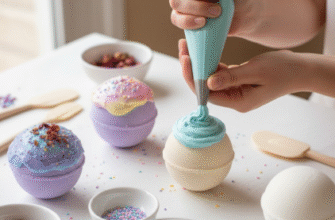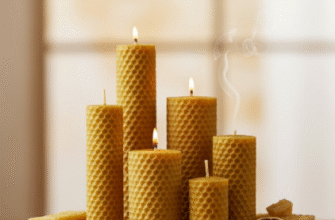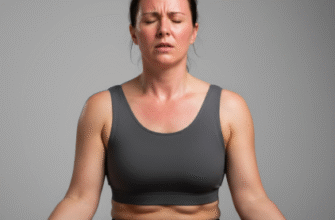The hours before sleep often feel like a race against the clock – finishing chores, prepping for the next day, maybe squeezing in some screen time. But what if you could transform those last moments into a dedicated period of calm and self-care? Introducing a simple self-massage routine into your pre-bedtime ritual can be a game-changer, helping you shed the day’s tension and signal to your body that it’s time to unwind and prepare for restful sleep.
Think of it as a gentle conversation with your own body. After rushing around, dealing with work stress, or even just sitting for long periods, muscles can become tight and hold onto that residual energy. A few minutes of focused touch can release this tightness, soothe tired limbs, and quiet the mental chatter that often keeps us awake. It doesn’t require expensive tools or extensive knowledge – just your own hands and a willingness to slow down.
Why Bother With Pre-Sleep Self-Massage?
You might wonder if adding another step to your evening is worth it. Consider the potential rewards. Regularly practicing self-massage before bed can contribute significantly to your overall well-being:
- Stress Reduction: Gentle touch and rhythmic pressure help lower cortisol levels, the body’s primary stress hormone. This promotes a feeling of calm and relaxation, making it easier to drift off.
- Improved Sleep Quality: By relaxing muscles and calming the nervous system, self-massage can help you fall asleep faster and experience deeper, more restorative sleep. Waking up feeling refreshed becomes more achievable.
- Muscle Tension Relief: We often carry tension in specific areas like the neck, shoulders, jaw, and lower back. Targeted massage helps release knots and alleviate aches accumulated throughout the day.
- Enhanced Body Awareness: Taking time to physically connect with your body increases mindfulness. You become more aware of where you hold tension and can address it proactively.
- A Ritual of Self-Care: Dedicating even 5-10 minutes solely to yourself sends a powerful message. It’s an act of kindness and care that nurtures both your physical and mental state.
Creating Your Sanctuary
Before you begin, take a moment to set the stage. This isn’t strictly necessary, but creating a calming atmosphere can significantly enhance the experience. Dim the lights, perhaps light a candle with a relaxing scent like lavender or chamomile (ensure fire safety!), or play some soft, ambient music. Minimize distractions – put your phone on silent and let others know you need a few minutes of quiet time. The goal is to create a peaceful bubble dedicated just to you and your relaxation.
A Simple Head-to-Toe Routine
This routine is a suggestion – feel free to adapt it based on where you feel the most tension or what feels best for you. The key is gentle pressure and slow, deliberate movements. You can use a light lotion or body oil if you like, which can make the massage smoother and add a moisturizing benefit, but it’s perfectly fine to do it dry.
Starting at the Top: Head and Scalp
Begin by gently massaging your scalp using your fingertips (not nails). Use small, circular motions, covering the entire scalp from the hairline to the base of your skull. Imagine you’re giving yourself a luxurious shampoo. This stimulates circulation and feels incredibly relaxing. Spend a minute or two here, breathing deeply.
Easing Facial Tension: Face and Jaw
We hold a surprising amount of tension in our faces. Use your fingertips to make small circles on your temples. Gently stroke outward across your forehead, smoothing away any frown lines. Pay special attention to your jaw – many people clench their jaw unconsciously, especially when stressed. Use your knuckles or fingertips to massage the hinge of your jaw (just below your cheekbones, near your ears) in small circles. Open and close your mouth gently as you massage to help release tightness.
Melting Away Stress: Neck and Shoulders
This is a prime area for tension. Use one hand to gently squeeze and knead the muscles on the opposite side of your neck, starting from the base of the skull down towards the shoulder. Repeat on the other side. Use your fingertips to make small circles at the base of your skull. Then, use downward strokes along the tops of your shoulders, squeezing the trapezius muscles (the large muscles between your neck and shoulder joint). You can also gently tilt your head from side to side while applying light pressure for a mild stretch.
Verified Information: Studies suggest that massage therapy, including self-massage techniques, can effectively reduce symptoms of anxiety and promote relaxation. The activation of pressure receptors can lead to decreased heart rate and lower levels of stress hormones. Engaging in relaxing activities before bed is widely recognized as beneficial for sleep hygiene.
Releasing the Day’s Work: Arms and Hands
Often overlooked, our arms and hands work hard all day. Use long, sweeping strokes from your shoulder down to your wrist. Gently squeeze the muscles of your upper arm and forearm. Pay special attention to your hands. Massage your palm with the thumb of your opposite hand, using circular motions. Gently pull each finger from base to tip, and massage the fleshy part at the base of your thumb.
Soothing Tired Legs: Legs and Feet
If you’ve been on your feet or sitting for long periods, your legs will thank you for this. Use long, upward strokes from your ankles towards your knees and then from your knees towards your thighs. This helps encourage circulation back towards the heart. Knead your calf muscles gently. Finally, give your feet some love. Sit comfortably where you can easily reach them. Use your thumbs to apply pressure to the soles of your feet, working from the heel towards the toes. Make small circles around the ankle bones. Gently massage each toe.
Incorporating Breath
Throughout your self-massage routine, remember to breathe deeply and slowly. Inhale through your nose, feeling your abdomen expand, and exhale slowly through your mouth or nose. Coordinating your breath with your movements can deepen the relaxation effect. For example, exhale as you apply slightly deeper pressure or perform a long, sweeping stroke.
Optional Tools
While your hands are your best tools, you might occasionally want to incorporate simple aids. A tennis ball or a dedicated massage ball can be great for working out knots in your shoulders (by leaning against a wall) or massaging the arches of your feet (by rolling the ball underfoot). A foam roller can be used for larger muscle groups like thighs and calves, though this might be better suited for earlier in the evening rather than right before hopping into bed.
Consistency is Key
Like any beneficial habit, the magic of pre-sleep self-massage lies in consistency. Aim to incorporate it into your routine most nights, even if it’s just for five minutes. Over time, your body will start to recognize this ritual as a signal to wind down. It becomes an ingrained part of your transition from the active day to the restorative night.
Important Note: Always listen to your body. Massage should feel good, promoting relaxation, not pain. Avoid massaging areas with injuries, inflammation, rashes, or varicose veins unless cleared by a healthcare professional. If you experience sharp or persistent pain, stop immediately.
Integrating a self-massage routine before bed is a simple, accessible, and powerful way to enhance your sleep quality and overall sense of well-being. It’s a moment to reconnect with yourself, release the physical and mental burdens of the day, and pave the way for a peaceful night’s rest. Give it a try tonight – your body and mind will thank you.








